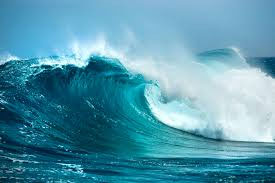
But even with increasing pressure on other energy sources, including oil, gas and coal, research into ocean activity as a source has not been urgent. The potential for wind and solar power tends to get more attention.
The U.S. Navy has stepped up with a test site in the waters off Hawaii to see if wave energy is a feasible area for more research. If it becomes a reality, it could be a boon to coastal cities around the world. In fact, Hawaii’s island cities have the highest electricity rates in the U.S., making the prospect attractive. The cities rely on fossil fuels shipped across the ocean. State officials have issued a mandate that Hawaii will be using renewable energy fully by 2045.
Surfers already know what the waves coming in to Hawaii are like. They are powerful and roiling. One of the challenges for the experimentation is to find buoys that can capture both the side-to-side and up-and-down ocean motions.
Any device designed to capture electricity generated by the motion would have to withstand long-term thrashing as well as the powerful storms that sometimes hit the coast. Not to mention the corrosive effects of constant exposure to salt water.
Patrick Cross, specialist at the Hawaii Natural Energy Institute in Manoa, which manages the test site, recognizes the challenges but is confident buoys can be designed that will do the job.
Being able to harness the energy now going to waste in the oceans would go a long way toward achieving the U.S. goal of reducing emissions from carbon-based fuels by a third by 2030. Many states are involved in efforts to develop renewable energy sources as well.
Some European countries also are pursuing the wave energy potential. They have spent more than $ billion on the effort, while the U.S. has put about $334 million into its research. Marine Energy Council, a trade group representing Great Britain and other European countries, is heading the research effort there. China and Norway also have been building and testing devices.
At present, the U.S. effort off Hawaii consists of two buoys anchored a half mile offshore. The Azura extends 50 feet below the ocean surface and stands some 12 feet above. It converts both horizontal and vertical movements in the ocean to about 18 kilowatts of electricity, enough to power about a dozen homes.
Plans are for Northwest Energy Innovations of Portland, Ore., a company working with the Navy, to build a prototype that can generate at least 500 kilowatts of energy, enough to power hundreds of homes.
Researchers are aware that the prospect of hundreds of buoys bobbing in the ocean could trigger opposition from environmentalists – the same problem that has stifled some wind turbine research.







